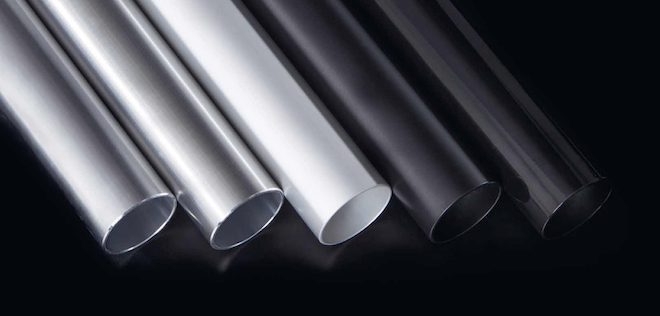
The finishes on MILOS aluminum products come in four categories - natural, painted, anodized and powder coated. Today we’re going to talk about two of these finishes that are the least understood – anodized and powder coated. Both of these finishes are extremely high quality and will serve you well for many years to come, but each one is special in its own way.
Let’s start with anodizing. This is a very unique finish, as it’s an electrochemical process that converts the aluminum surface into an anodic oxide finish that is attractive, durable and corrosion-resistant. Aluminum is an ideal candidate for anodizing, but other metals that are nonferrous, such as magnesium and titanium, can also be anodized. It is normally carried out on smaller MILOS aluminum products, such as cell clamps and pins, which are tossed around and see a lot of abuse.
The process starts by dipping the aluminum component into an acid electrolyte bath and applying an electric current to the liquid through the use of a cathode. This causes oxygen ions within the aluminum to be released, which then combine with the aluminum atoms on the surface of the component to create the anodic oxide finish. This process gives the metal surface a porous structure, which can then be colored with dyes and sealed afterwards.
Since this process is carried out in an acid bath, larger products in the MILOS product range are normally not available with this finish. Products with welds that are not completely sealed are also not good candidates, as the liquid can drip from the weld holes and ruin the finish.
An advantage of the anodized finish is that it is not applied on the surface of the metal. Instead, it is integrated with the aluminum substrate, which means it does not peel or chip like paint.
In summary, you can say that anodizing is a turbocharged process of oxidation, which occurs naturally with aluminum over time.
Powder coating is a very popular finish and is offered on all sizes of MILOS aluminum products. As the name suggests, it is a completely dry paint that does not contain any solvents. As the powder coating does not contain any liquid, thicker coats of paint can be applied compared to conventional liquid coatings without running or sagging of the paint, and powder coatings can be applied horizontally or vertically without noticing any difference in appearance.
The powder coating process is fairly straightforward. The first step is to externally apply the powder to metal with an electrostatic paint gun, which gives the powder a positive charge. The positive charge allows the paint to attach firmly to the metal’s surface. The product is then moved to an infrared oven, where it is heated up so the powder melts into a uniform film. This is followed by a cooling process, which hardens the paint. The result is a tough and durable powder coat finish that resists scratches, chipping and peeling.
It’s interesting to note that the powder coating process is environmentally friendly, as it has none, or very few, volatile compounds and produces a very limited amount of hazardous waste. In addition, any overspray during the coating process is captured and can be reused.
Now you’re up to speed on both finishes and hopefully have a better idea of what you’re receiving when given the choice of these finish options on future MILOS product purchases.